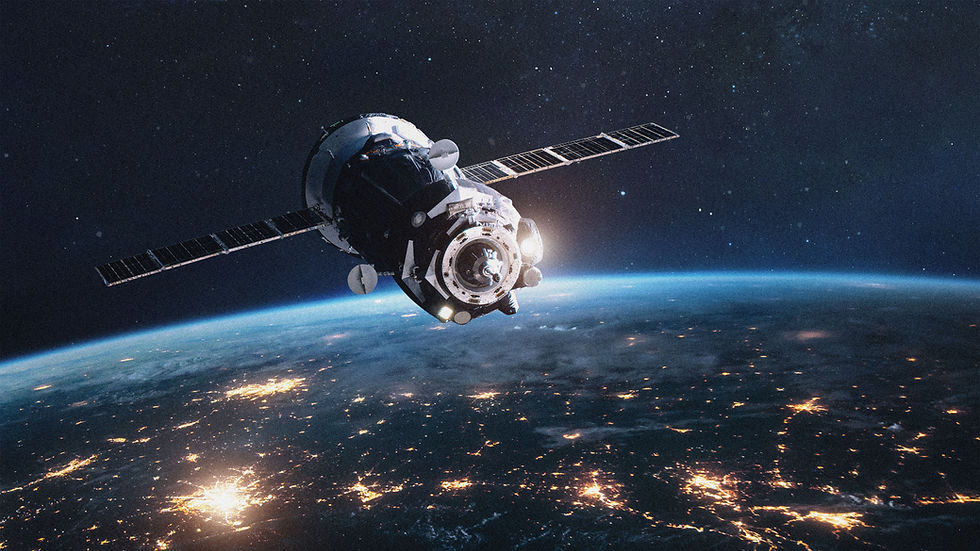Expanding the Pipeline: What the Space Exploration's Future Will Look Like for Minority Demographics
- Amanda Grodman

- Jul 30, 2022
- 4 min read
Updated: Jun 2, 2023
With new uncertainties that arise in and out of the classroom, prospective college students may face doubt or concern in applying to their dream institutions. Nonetheless, as CNBC explains, percentages of college applications from the most recent wave have positively increased, a contrary statistic to the dwindling numbers seen during the pandemic. While this has created some additional competition in the college realm, more opportunities, including those offered for social, ethnic, and racial minorities, arise with every new class that enters. Particularly, STEM fields have been geared towards male populations, and defying these clichés has been a newfound concept attributed to the opportunities many more are discovering in both undergraduate and higher-degree programs. As more classes are offered in specified fields, particularly in engineering and aeronautics, students that may have not had the opportunity to explore their passions in previous levels of education are now able to change the world one semester at a time; and the history orbiting these changes is nothing but revolutionary.

Among the broader demographics that have lacked prior opportunity to explore
aerospace and engineering, along with STEM fields in general, are women. Previously unrecognized in this field, women notably appeared on the scene in the 1940s, as NASA elaborates (check out this link for more information and even primary photographs); similar to other tech-based fields, women were needed because of the sudden efflux of male workers. In NASA’s Glenn Research Center, women worked in numerous roles, from technicians to administration as World War II prevailed. Not only that, but several women defied their typical roles by making strides in aviation, marking the creation of the Women Airforce Service Pilots (WASP) organization. Ultimately, World War II, among other events during this time, was crucial to the expansion of women in aerospace and STEM fields because of how many remained in their positions achieved during unfortunate circumstances. Today, NASA and other global space agencies have certainly seen a diversification since their earlier years, and more emerging graduate students may find their calling in this growing field soon enough.

Although World War II’s outbreak dates back to over 80 years ago, the strides of women during this time are certainly impactful, and continue to expand, for women today. These statistics alone beg the question: what will the future of women in space, or similar technological fields, look like? In a Forbes interview with Susan Chodakewitz, President of Tetra Tech, the respondent emphasizes the culture of aerospace industries and how more effort must be put in between high schools and undergraduate programs to continue expanding the pipeline of women in the aerospace field; ultimately, this would encompass ethnic and racial minorities. She elaborates on the future of women in aerospace, and how new, team-based interactions will only promote a gender balance in this realm. International space agencies expanding their demographic borders and choosing different people will not only provide opportunity to those who have admired space from afar since childhood, but also inspire astronauts and those wishing to enter aeronautic fields for years to come. To conclude the interview, Chodakewitz enforces that the opportunities for women interested in this field, along with STEAM in general, are limitless despite common stereotypes; this certainly applies for ethnic, religious, and racial minority groups as well.

In this episode of “Let’s Go to Space: BLUESKY Learning,” Episode 70: Megan Wnek: Aerospace from The Swamp: UF engineering and exploration, we are joined with University of Florida undergrad student Megan Wnek, who shares her experiences as a prospective engineer in working on various space exploration projects. Ms. Wnek currently studies Aerospace Engineering at UF with a minor in Electrical Engineering, although this wouldn’t have been possible without her love for both STEM and the arts that was fostered early in her life. Additionally, she has interned at Lockheed Martin Aeronautics on the F-35 program, Northrop Grumman Space Systems as a systems engineering intern, and has also led several teams in various interdisciplinary NASA competitions.
Interested in the growing space tourism industry instead? Check out Episode 72: From Colombia to Space featuring Sara Alvarado, a student at the University of Central Florida and national chair of Students for the Exploration and Development of Space (SEDS). Seeing a promising future in space tourism, Ms. Alvarado is a prominent leader in the UCF space/engineering community, taking several students to Washington D.C. conferences while also managing an Industrial Engineering position at Universal Orlando Resort. She also shares her insightful experiences about how opportunities in the US have changed her perspective on her career since immigrating from Colombia. Whether you see yourself as an advocate for space tourism, electrical engineering, or maybe even a bit of both, both speakers emphasize the importance of diversity within both fields–whether that be social, racial, or thought-based. Check out these episodes to hear more from Ms. Megan Wnek, Ms. Sara Alvarado, or visit our other weekly podcasts to hear from other speakers on their experiences and hopes for the future of space. Also make sure to check out our website to learn more about becoming a member of the Aerospace and Innovation Academy, where you can join us in our quest to go to space.




Comments